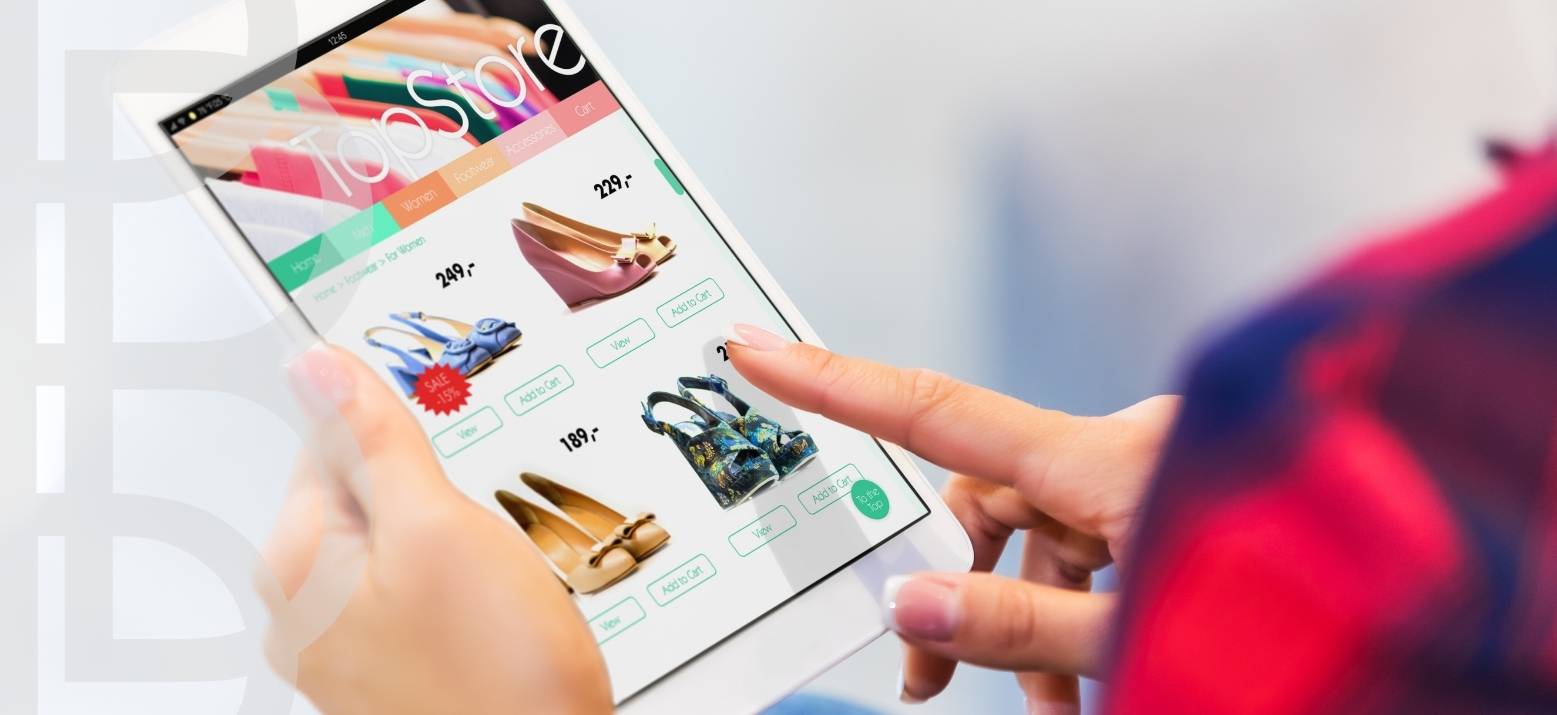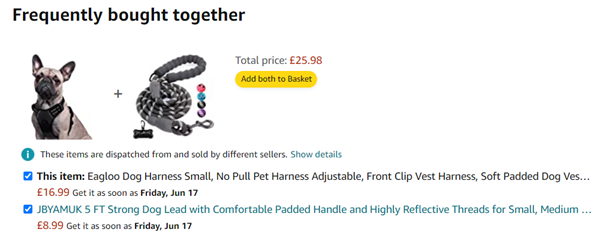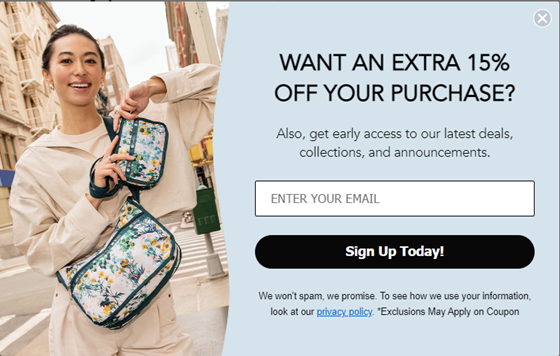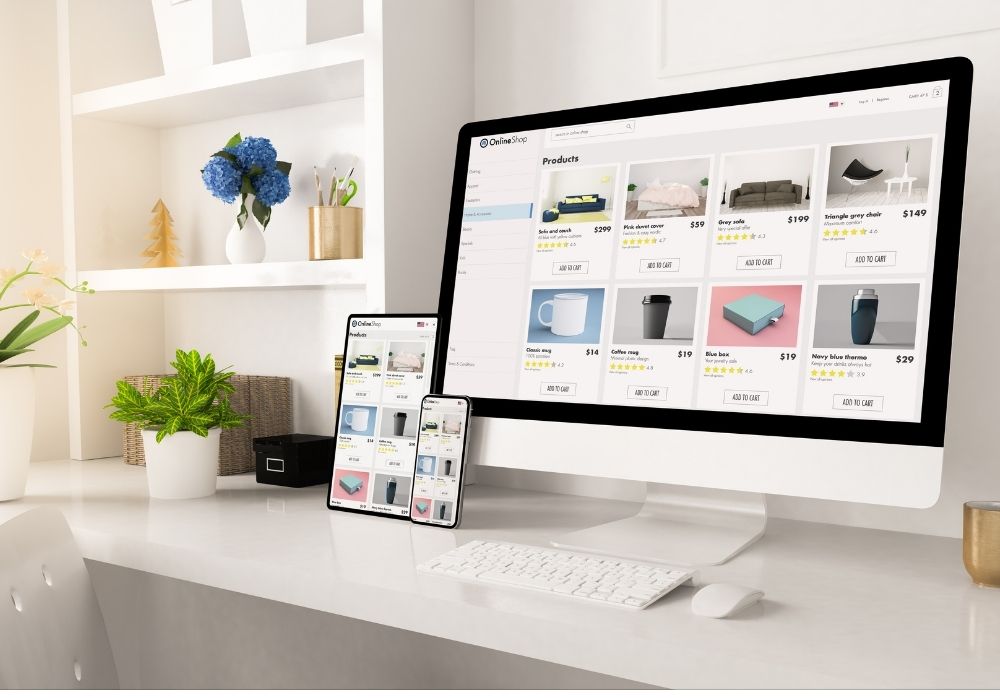Offering personalised shopping experiences online – without it being ‘creepy’
Ecommerce personalisation has been talked about for years, with surveys and studies finding that it’s something that many online shoppers not only value, but now also expect.
According to Instapage, 74% of customers feel frustrated when website content isn’t personalised, and Epsilon found that 80% of consumers are more likely to make a purchase when they’re offered personalised experiences.
That being said, we’ve also all seen the other side of personalisation in marketing; the social media advert that mysteriously appears in our feed even though we haven’t consciously been looking for that product; the brand ads that follow you from platform to platform for weeks. There can be a fine line between ‘convenient’ and ‘creepy’ in this kind of context!
We look at why ecommerce personalisation is a valuable tactic, who is doing it well and how to develop a strategy that falls on the right side of the line.
The benefits of personalisation in ecommerce
There are multiple benefits of personalisation and customisation in ecommerce, because when it’s done well, it ultimately provides consumers with targeted content and makes finding and buying products that they’re interested in really straightforward.
The main benefits include:
- Improving the user experience (UX) – giving customers a straightforward and positive experience on your site can make purchasing easy and promotes loyalty, whilst also boosting repeat custom and brand advocacy.
- Increasing sales – making it easier for visitors to buy from you can not only get more sales across the line but can also increase the average order value to give revenue a double boost.
- Driving more conversions – ecommerce isn’t all about driving immediate sales. Personalisation can help drive other conversions that form earlier parts of the buying journey, such as email signups, content consumption and customer loyalty schemes, which result in increased sales and revenue further down the line.
Gathering data and segmenting users for your ecommerce personalisation strategy
Personalisation on your website can only be effective if it’s based on certain data points that apply to your customers, so that they are accurately segmented and then served with the most relevant content, options and products for them.
Some of the most common ways to do this include:
- Visitor status – i.e. are they a new visitor? A returning visitor who has bought from you in the past? A returning visitor who hasn’t made a purchase?
- Source of the traffic – i.e. the medium that they arrived at the site from e.g. email campaign, organic search, referral, affiliate link, social media organic post or ad etc.
- User behaviour on-site – i.e. the actions they take once they land on the site e.g. self-selecting a category, using the site’s search function, whether they are a guest or have a registered account
- Location – i.e. the country they are based in, which can indicate the language, currency etc that they can be shown.
- Product pages they have looked at/products added to cart but not bought – whether on this site visit or previously – were they researching and are now ready to buy?
- Products they have bought previously – would they be likely to buy the same thing again or would they potentially be looking for complementary products/accessories instead?
There are a variety of different platforms, from WordPress to Shopify or Magento, that can essentially plug into your website and use cutting edge artificial intelligence (AI) to offer personalisation elements to visitors, such as dynamic content that is unique to every visitor or segment.
They each offer different features and services that may or may not be suited to your particular website build, product range and customers, so it’s essential to do your own research. Some examples include Nosto, Dynamic Yield and Clerk.io.
Ecommerce personalisation examples
In order to determine how to best tread that fine line between useful personalisation and a website that ‘knows too much’ and will scare people off, we’ve gathered some examples of websites doing personalisation well that can possibly inspire your own strategy.
1. Amazon – “Frequently bought together” recommended products
We couldn’t write a piece on ecommerce personalisation and NOT include Amazon!
It runs through every stage of the journey, from the moment you land on the homepage right through to purchase and beyond. For the purposes of this post, we’ll focus on their ‘frequently bought together’ personalisation, designed to cross-sell additional products that complement the one that the visitor is viewing, based on their product searches and on-site activity.
When looking for a dog harness in a small size, it does stand to reason that the shopper might be interested in a new dog lead too, in complementary colours. Even if they already have a dog lead and weren’t originally looking for a new one, seeing the two products together could easily tip the balance into making a bigger sale.
2. Next – “You might also like” recommended products
With a slightly different objective i.e. to show shoppers that there are alternatives to the product they are currently viewing, including those of a higher value, Next’s website will show you variations on a theme, in this case linen trousers, on every product page.
3. LeSportSac – Pop-up newsletter sign-up incentives/discounts for first-time visitors
Email is still one of the best-converting marketing channels for many ecommerce brands, so segmenting your audience to target those who are visiting for the first time with a chunky incentive to opt in to marketing emails makes a lot of sense.
If this popup showed to someone who was already an email subscriber when they came back to the site, it would be annoying. So, ensuring it only shows to people who haven’t bought from them before is a straightforward way to minimise that kind of issue.
4. Asda – Re-order favourite products
Online grocery shopping, like any kind of ecommerce for consumables, means that repeat purchases are probable within a fairly short space of time. Asda can fairly safely assume that because I’ve bought crumpets, bread and chicken several times in the past when shopping through their website, I might want to add them to my order again this time. They’d most often be right! Who doesn’t love crumpets?
As a consumer, I know and expect a supermarket website to keep track of what I’ve ordered in the past and suggest those things again. It offers the shopper a quicker way to add favourites to their basket and can help increase the order value if the customer ends up adding things they otherwise wouldn’t have done, just because it’s presented to them as a helpful reminder of what they usually order.
5. Ebay – “Because you searched:” recommended products
Ebay is another brand that have been utilising elements of personalisation for some time, but some of their product recommendations take it a step further than many online retailers.
Having had a quick look for a second-hand laptop, Ebay doesn’t just show me a range of other laptops in a similar price and specification range, it also shows me something that might commonly need to be replaced, especially with a second-hand purchase.
For those who get a bit creeped out that websites seem to retain too much information about them, the simple explainer at the top of the section ‘because you searched…’ will help explain why they are being shown these products. This may or may not put their mind at rest!
Your strategy for personalisation and customisation in ecommerce
As with all areas of marketing, the key to success when offering a personalised online shopping experience is to understand what your customers want, the barriers that stand in the way of their purchases and what they need to know and feel in order to take that final step.
Understanding the various user journeys that your site visitors take (including the ones who don’t buy from you) is the starting point for all other areas of your marketing strategy, including personalisation. It helps to shape your ecommerce content, your SEO strategy and even your digital PR services and comms plan.
If you want help with your online retail presence, the team would love to hear from you. Get in touch using the form below.













